The Aqua Tower
The Aqua Tower in Chicago brings the fresh perspective of a young architect, Jeanne Gang of Studio Gang Architects, to bear upon century-old skyscraper design challenges.
The Aqua Tower, looming over 1.9 million square feet, is an 82-story mixed-use high-rise complex that includes 55,000 square feet with a hotel, apartments, condominiums, offices, and parking. This aesthetically pleasing Chicago skyscraper is the tallest building designed by a woman-owned architectural firm and the first skyscraper from Jeanne Gang, principal and founder of Studio Gang Architects (SGA), which is based in Chicago.
 Image courtesy of Studio Gang Architects
Image courtesy of Studio Gang Architects
In 2004, Jim Loewenberg, a veteran Chicago architect and developer, met Gang, a rising star whose then-tallest independently completed work was a Rockford community theater that had a 90' tall fly tower. Loewenberg was looking for a young architect who would produce an out-of-the-box design for a tall tower at Lakeshore East, which rises west of Lake Shore Drive and south of the Chicago River.
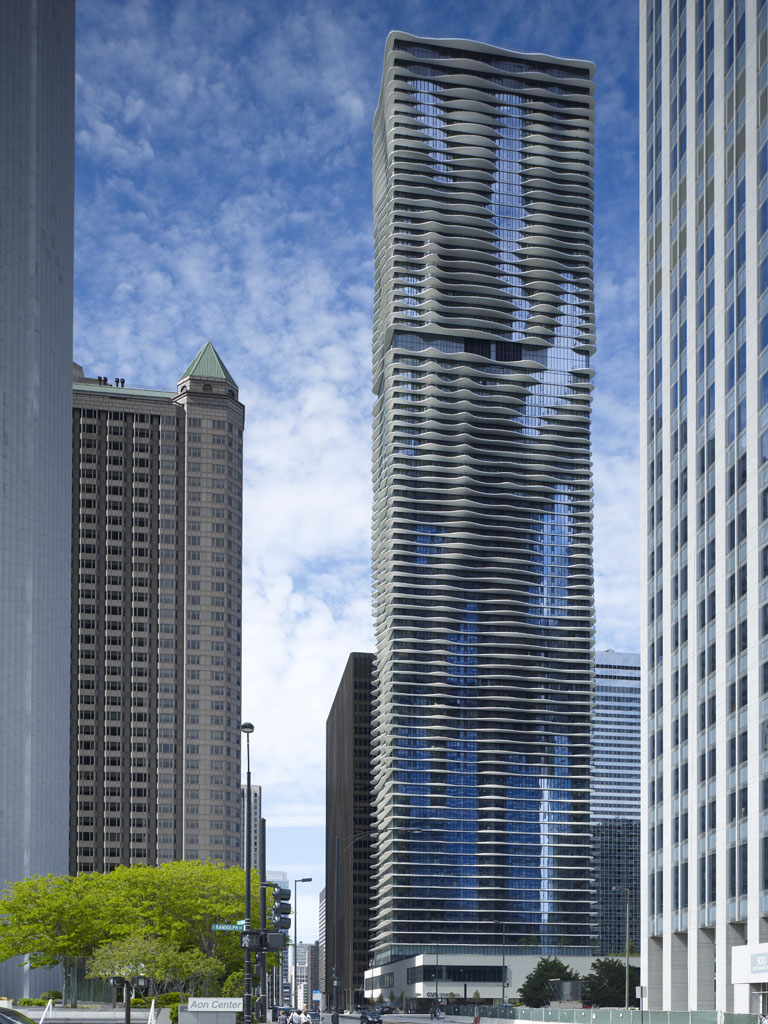
Responding to the site for the proposed tower, which was surrounded by a jungle of nearby high-rises, Gang and her colleagues produced a novel concept: a skyscraper whose balconies would be stretched outward, varying from 2 to 12 feet, to capture views that would not be available otherwise. For example, if you lived on the east side of the tower, you would not only be able to see Lake Michigan but also Millennium Park, as you would be able to peer through the thicket of adjoining high-rises.
Inspired by the layered topography of limestone outcroppings along the Great Lakes, Gang sculpted the balconies into a larger visual order. Reflecting her talent for giving poetic form to mundane materials, the design seized on the plasticity of concrete.
When the plan was unveiled in 2006, it prompted raves from critics—and sneering from some of Gang’s competitors, who claimed that the balconies would be mere decorative appendages.
The building’s construction began in 2007 and was completed in 2009. Costing approximately $475 million, this unique building is more remarkable than it looks: it is also a green building. When SGA took on this project, it was important to them to incorporate sustainable features into their building design.
“When we take on a project at SGA, we think about which systems are affected, such as water, animals, or plant species. It is important to address conservation but also to imagine how a project might support or improve an environmental condition,” Gang said in a recent American Institute of Architects interview with Tibby Rothman.
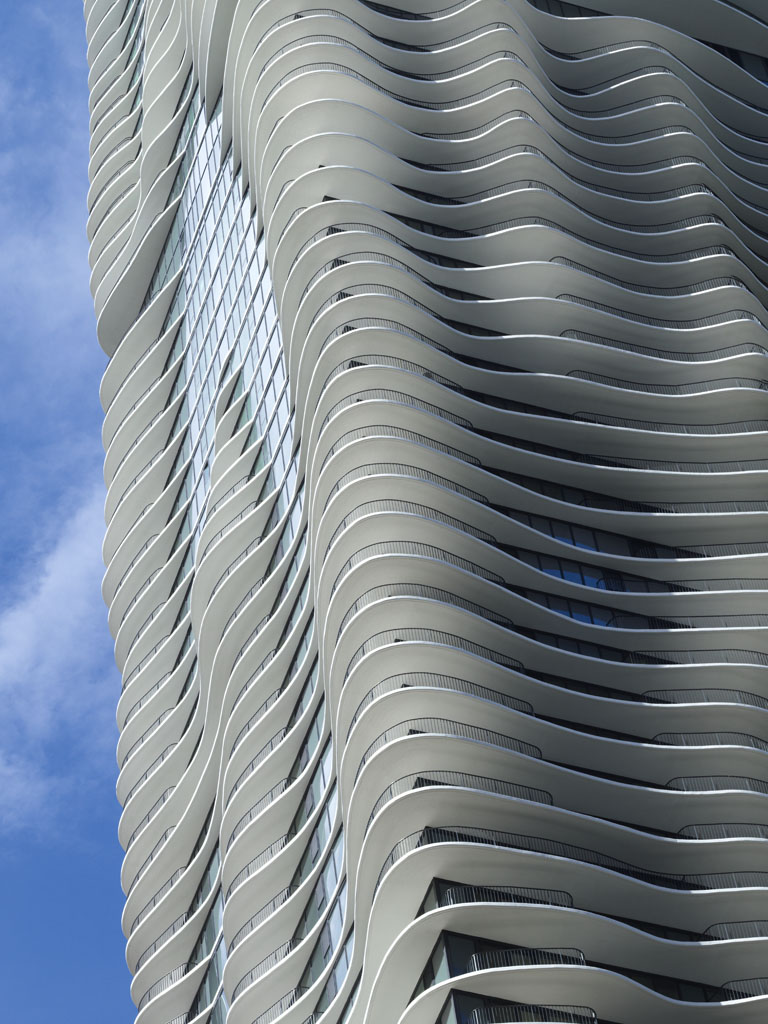
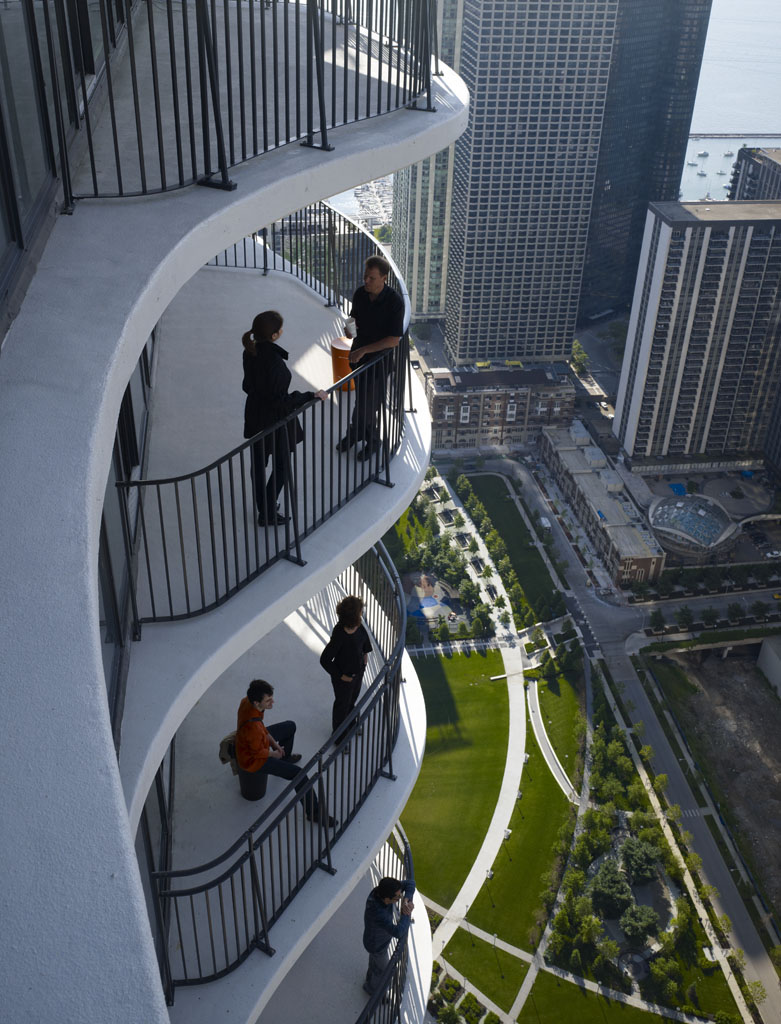
Shading apartments from the hot summer sun, the balcony overhangs of the façade serve an environmental purpose. More resourceful still, they also protect the building from the force of wind, one of the most difficult challenges in skyscraper engineering. The landscape of rolling hills and valleys created by the balconies effectively diffuses the heavy Chicago winds, giving them no clear path.
Contractors built the balconies by loading Gang’s specifications for the curving balcony edges directly into a surveying tripod with a built-in computer. That allowed them to bend steel formwork to precisely the contours Gang and her colleagues designed.
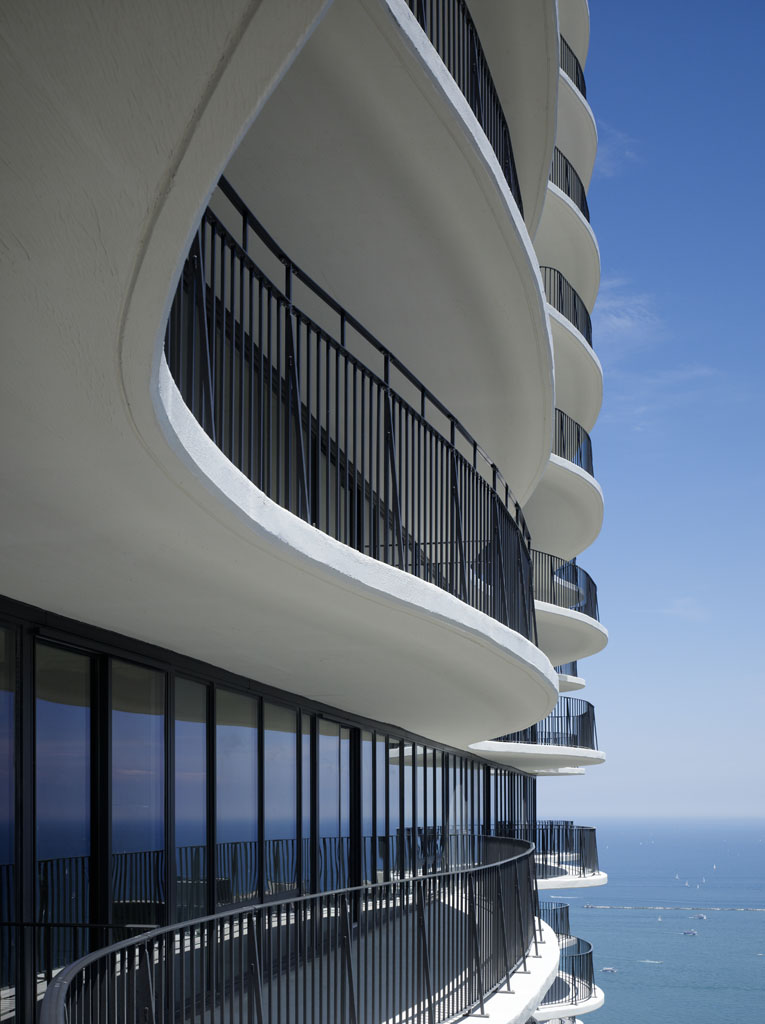
In a further display of the virtues of customization, Gang tweaked the balconies for sun-shading, making them deeper on the south than on the north. She also put as many balconies as possible next to living rooms, thus forming visual extensions of the living spaces. Finally, the oval “pools” of glass between the balconies use a tinted, reflective glass to prevent apartments from overheating.
In addition, Aqua Tower’s waste management plan diverted 84% of construction waste normally sent to landfills to recycling centers. Constructed on a former brownfield site, 50% of the site is dedicated green open space. The 80,000 square foot green roof, composed of native vegetation, is one of the largest is in the city, and features a drainage system that collects rainwater for self-irrigation. It contains an outdoor pool, running track, gardens, fire pits, and yoga terrace.
A number of eco-friendly interior finishes were offered to Aqua Tower residents. These include bamboo flooring (produced with one-fifth the amount of hardwood required for equivalent solids), Greenguard-certified (low-emitting) HanStone Quartz countertops, and plumbing fixtures that reduce gallons per minute flow to encourage water conservation. The standard appliances are all Energy Star-rated, including KitchenAid refrigerators and dishwashers.
These features allow Aqua Tower to rise above a criticism frequently leveled at such “wow” buildings—that they are simplistic one-liners where form overrides function. At Aqua Tower, there is a reason for everything.
Aqua Tower has enough energy-saving features to strive for a LEED (Leadership in Energy and Environmental Design) silver rating from the U.S. Green Building Council. It has already received an award from the People for the Ethical Treatment of Animals (PETA) because birds will be able to see its curving balconies and therefore will be less likely to fly into the tower.
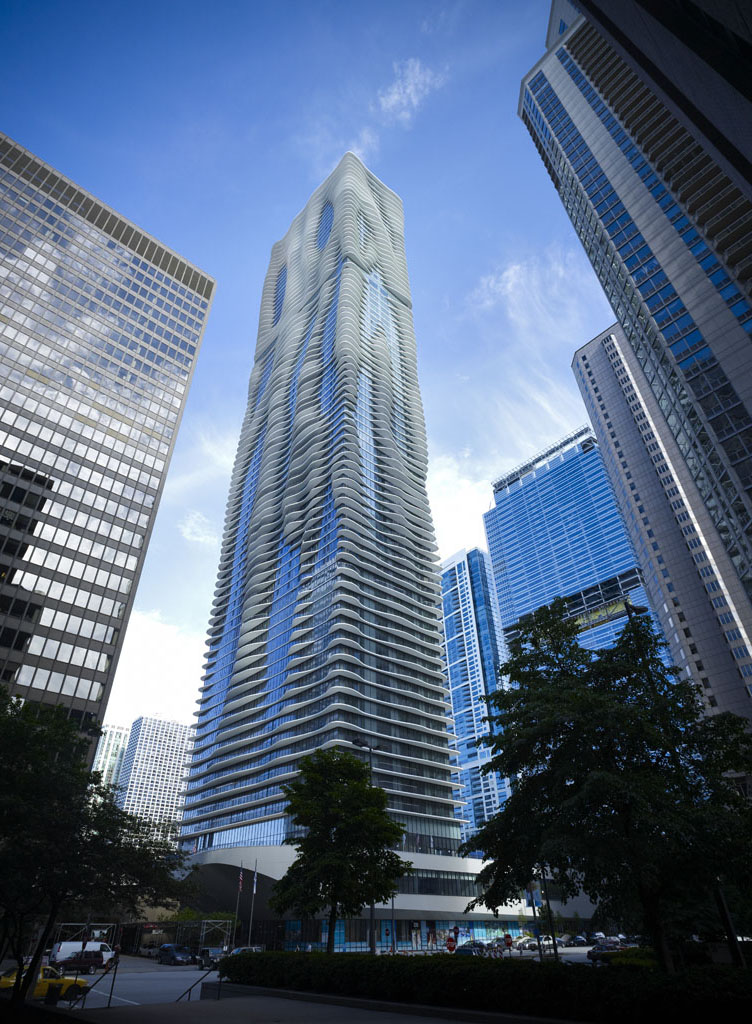
The Aqua is a testament to Loewenberg’s confidence that a young designer could bring fresh solutions to old challenges in skyscraper design. Gang’s unique perspective has brought multiple innovations that will undoubtedly serve as a template for the upcoming generation of AEC professionals.

J. Mariah Brown
J. Mariah Brown is a technical research writer and the owner of Writings by Design, a comprehensive business writing service company that specializes in business development, promotion, and client outreach. She has worked in a variety of technical and non-technical industries including, but not limited to, Government, Non-Profit, Engineering, Translation and Interpretation, Christian and Women’s Publications, and Fashion and Beauty. She is a graduate of the prestigious E.W. Scripps School of Journalism at Ohio University and is currently pursuing a master's degree from Gonzaga University in Communication and Organizational Leadership.






